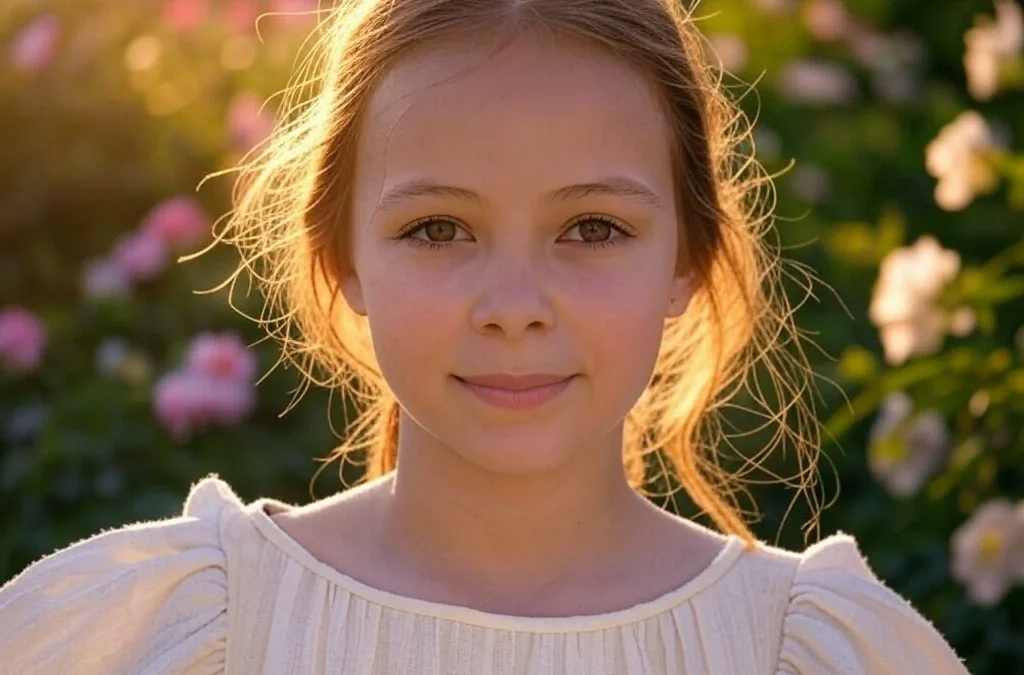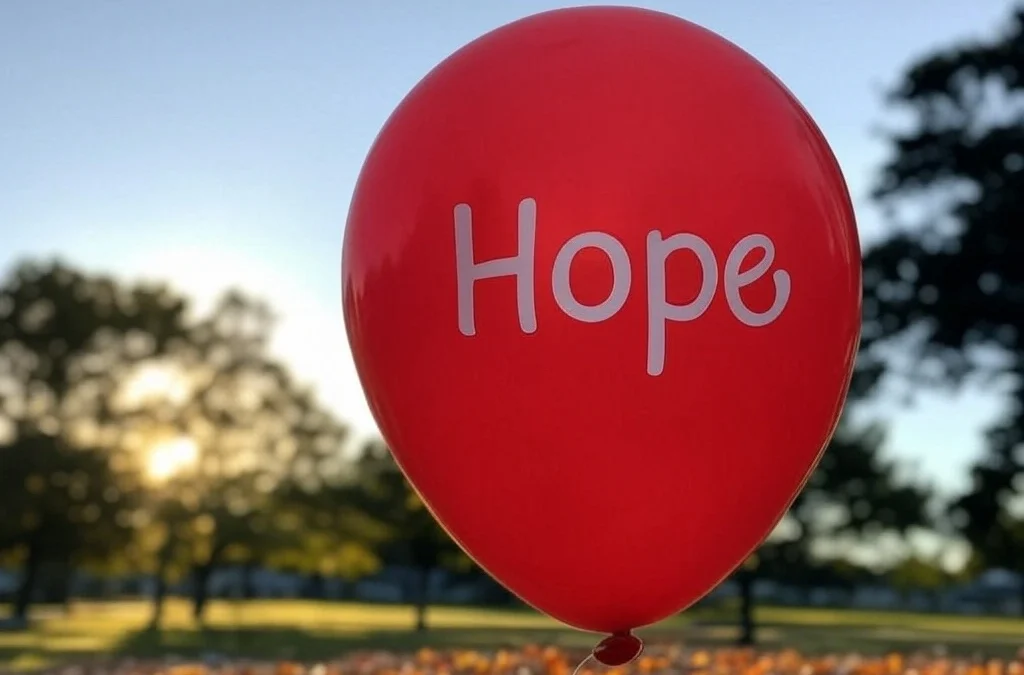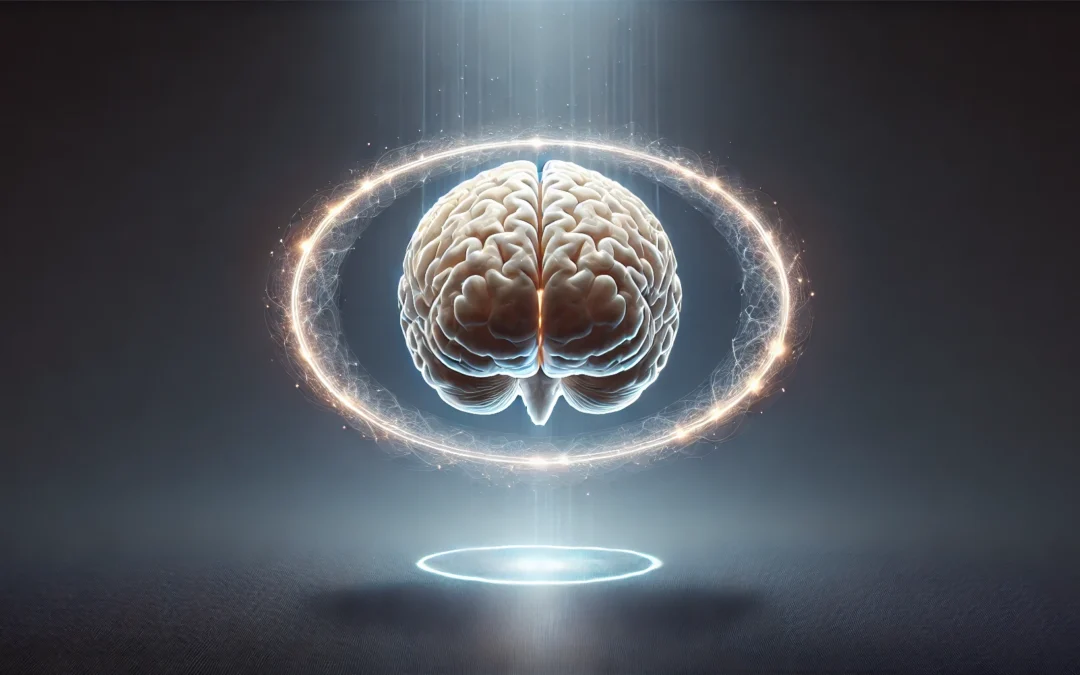Imagine waking up in the morning, the smell of fresh coffee wafting through the air, as you become aware of the world around you. This simple moment is a glimpse into the vast and complex experience of consciousness. Consciousness is what makes us aware of our thoughts, emotions, and surroundings. It’s a fundamental part of being human, yet it can be surprisingly hard to define and understand.
In this article, we’ll explore 20 different examples of consciousness that highlight its many forms and facets. From the focused attention you use when reading a book, to the daydreams that take you to far-off places, consciousness shapes our daily lives in countless ways. Whether you’re pondering a difficult decision or simply enjoying a quiet walk in nature, these examples will help you appreciate the richness and depth of our conscious experience. Join us as we explore the intriguing and diverse ways consciousness manifests in our everyday lives.
Understanding Consciousness
Consciousness is a multifaceted concept that has intrigued philosophers, scientists, and thinkers for centuries. At its core, consciousness refers to the state of being aware of and able to think about one’s own existence, sensations, thoughts, and surroundings. It encompasses everything you experience, from the vivid colors of a sunset to the inner dialogue you have with yourself.
Consciousness is often described as having several key components:
- Awareness: This is the ability to perceive and be aware of the environment and one’s own mental states. Awareness is what allows you to recognize the world around you and understand your position within it.
- Subjectivity: Conscious experiences are inherently personal and subjective. This means that no one else can experience your consciousness in exactly the same way you do. This subjective nature is what makes consciousness unique and personal.
- Intentionality: Consciousness is directed towards something. Whether it is a thought, an object, or an experience, consciousness always has an object of focus.
- Cognition: This involves the mental processes of thinking, understanding, learning, and remembering. Consciousness is closely tied to the cognitive functions that enable humans to process information and make decisions.
- Self-awareness: A crucial aspect of consciousness is the ability to reflect on oneself and one’s place in the world. Self-awareness allows individuals to think about their own thoughts and emotions, leading to introspection and self-reflection.
The study of consciousness spans multiple disciplines, including psychology, neuroscience, philosophy, and cognitive science. Each field offers different perspectives and theories about how consciousness arises and functions. Some scientists explore the neurological basis of consciousness, examining how brain activity correlates with conscious experience. Meanwhile, philosophers debate the nature of consciousness, asking questions about its essence and how it fits into the broader understanding of reality.
Consciousness remains one of the most profound and challenging topics in both science and philosophy. Despite significant advances in understanding the brain and behavior, the exact nature of consciousness and how it emerges from physical processes is still not fully understood, making it a compelling and ongoing area of study.
In summary, consciousness is the complex phenomenon of being aware and able to think about oneself and the environment. It is characterized by awareness, subjectivity, intentionality, cognition, and self-awareness. Understanding consciousness is crucial for exploring the human mind and its capabilities, and it continues to be a central topic in various scientific and philosophical inquiries.
The Best Examples of Consciousness
Consciousness is a fundamental part of human experience, shaping how we perceive, think, and interact with the world. Below are 20 good examples that illustrate what consciousness is and how it manifests in our daily lives.
1. Waking Up in the Morning
Consciousness becomes clear when you wake up. You move from the unconscious state of sleep to being aware of the world. You notice the sunlight streaming through the window, hear birds chirping, and feel the warmth of your blanket. These sensations signal that you are conscious, actively perceiving your environment.
2. Recognizing a Friend in a Crowd
Imagine being at a busy event. Your eyes scan the crowd, and suddenly, you recognize a friend. This moment of awareness – identifying a familiar face – is a vivid example of consciousness. Your mind processes visual information and connects it to your memory.
3. Feeling Pain from a Paper Cut
When you accidentally get a paper cut, the sharp pain instantly catches your attention. This physical sensation isn’t just about your body; it’s your conscious mind acknowledging discomfort. You might also feel annoyed or distracted, adding an emotional layer to the experience.
4. Solving a Math Problem
When working through a tricky math equation, your conscious mind actively engages with the task. You think about numbers, test solutions, and decide what steps to take next. This focused attention shows how consciousness helps us problem-solve and make decisions.
5. Listening to Music
Listening to a favorite song is a simple but rich example of consciousness. You notice the rhythm, lyrics, and emotions the music evokes. You might even start humming along. This active awareness of sound and its impact on your mood highlights how consciousness works in everyday life.
6. Watching a Sunset
As you watch the sun dip below the horizon, you may feel a sense of wonder. You’re not just seeing colors change in the sky – you’re also reflecting on the beauty and feeling connected to the moment. This mix of perception and emotional awareness is a clear expression of consciousness.
7. Daydreaming During a Quiet Moment
Sometimes, your mind wanders. You might imagine future plans or relive past memories. Daydreaming is an example of inner consciousness. Even without external triggers, your thoughts and emotions create a mental landscape that feels vivid and real.
8. Reacting to an Emergency
If you hear a sudden loud noise, like a car horn or a breaking glass, your consciousness immediately shifts focus. You feel alert and assess the situation. This quick response shows how consciousness helps us prioritize and react to unexpected events.
9. Tasting Your Favorite Food
Eating a delicious meal brings consciousness to the forefront. You savor the flavors, notice textures, and feel satisfied. Your awareness of the sensory experience and how it makes you feel is a direct example of being fully present and conscious.
10. Reflecting on a Life Decision
Thinking about an important choice—like changing careers or moving to a new city – demonstrates a deeper level of consciousness. You weigh pros and cons, imagine possible outcomes, and consider your feelings. This self-awareness is a key aspect of what makes us conscious beings.
11. Feeling Embarrassed After a Mistake
Imagine you say something awkward in a group conversation. The moment you realize it, you feel embarrassed. This awareness of your words, and how others might perceive them, is a form of self-consciousness. It shows how we evaluate ourselves in social situations.
12. Noticing a Strong Smell
Walking into a kitchen and instantly recognizing the aroma of freshly baked bread is another example of consciousness. Your mind connects the smell to a familiar experience, making you aware of both the scent and its meaning.
13. Deciding What to Say in a Conversation
When talking to someone, you often pause to think about your next words. This moment of reflection—considering how your words might affect the conversation – is a clear instance of conscious decision-making.
14. Watching a Child Learn Something New
Observing a child figure out how to tie their shoes or solve a puzzle can make you aware of how consciousness develops. You see their focus, trial and error, and eventual success. This process is a practical example of growing awareness and understanding.
15. Noticing Your Breathing While Meditating
During meditation, you might shift your attention to your breath. Normally, breathing is automatic. But in this practice, your conscious mind observes the rhythm of each inhale and exhale. This heightened awareness is a direct form of consciousness.
16. Remembering a Past Event
Revisiting a vivid memory – like a birthday party or a vacation – shows how consciousness works with recall. You don’t just picture what happened; you also feel the emotions tied to the event. It’s a mix of sensory and emotional awareness.
17. Getting Lost in a Good Book
Reading a captivating story brings another layer to consciousness. You’re fully absorbed, imagining characters, settings, and events. Your mind creates a vivid experience from words on a page, blending imagination and awareness.
18. Becoming Aware of Time Passing
Sometimes, you might glance at the clock and suddenly realize how much time has passed. This moment of awareness – shifting from being engrossed in an activity to noticing the passage of time – is a striking example of consciousness in action.
19. Feeling Startled by a Sudden Touch
If someone taps you on the shoulder unexpectedly, your mind reacts immediately. You feel the physical sensation, become aware of who touched you, and assess the situation. This quick shift in focus shows how consciousness helps us respond to our environment.
20. Appreciating a Piece of Art
Standing in front of a painting or sculpture, you might feel a mix of thoughts and emotions. You notice the colors, shapes, and details, while also reflecting on what the artwork means to you. This combination of perception and interpretation is a strong example of consciousness at work.
Exploring the Spectrum of Awareness
Awareness is a concept often intertwined with consciousness, yet it offers its own intriguing dimensions. While consciousness generally refers to the state of being awake and able to experience thoughts and perceptions, awareness can be more granular. It involves the recognition and focus on specific elements within our environment and internal experiences. Understanding this spectrum can deepen our comprehension of both individual and collective human experiences.
At the most basic level, awareness can be seen in the automatic responses of our body. For instance, the way your hand instinctively pulls back from a hot surface is a form of sensory awareness. This type of awareness doesn’t require deep thought or reflection; it is an immediate reaction to external stimuli, a fundamental part of our survival mechanism.
Moving up the spectrum, we encounter emotional awareness. This is where individuals start to identify and understand their emotions and the emotions of others. Emotional awareness allows people to navigate social situations more effectively, fostering empathy and communication. It plays a crucial role in personal relationships and emotional intelligence, impacting how we connect with the world around us.
Another fascinating aspect is the awareness of thoughts, often cultivated through mindfulness and meditation practices. This level of awareness can help individuals observe their thoughts without judgment, leading to greater self-understanding and control over one’s mental processes. It is a powerful tool for managing stress and enhancing focus, enabling a more intentional approach to life.
Finally, there’s a collective awareness, which emerges when groups of people share a common understanding or purpose. This can be seen in social movements, cultural shifts, and shared human experiences. Collective awareness can drive societal change, as it often involves a heightened consciousness of social issues and a unified effort to address them.
By exploring these different layers of awareness, we gain a more nuanced view of human experience, one that complements the broader understanding of consciousness. Recognizing and nurturing these levels of awareness can enrich our lives, enhance our interactions, and foster a more empathetic society.
Consciousness and Artificial Intelligence: Can AI Truly Be Conscious?
Creating artificial intelligence with human-like consciousness is one of the most challenging tasks in technology. Consciousness is not just about processing information or responding to inputs. It involves self-awareness, emotions, subjective experiences, and the ability to understand one’s own existence. These qualities make replicating consciousness in machines incredibly complex.
Why Is It So Hard to Create Conscious AI?
Human consciousness is tied to the brain, a highly intricate organ shaped by millions of years of evolution. Scientists and researchers still do not fully understand how the brain creates conscious thought. Is it the result of complex neural networks, or is there something deeper, like the concept of a soul? This lack of understanding makes it nearly impossible to design a machine that can truly replicate human consciousness.
AI systems today are advanced but lack true awareness. They can process large amounts of data, recognize patterns, and simulate conversations. However, these actions rely on algorithms and programmed responses. They don’t feel emotions, have personal experiences, or genuinely “understand” the world around them.
Could AI or AGI Ever Have Real Consciousness?
Some researchers believe artificial general intelligence (AGI) might one day achieve consciousness. If AGI reaches a level where it can learn, adapt, and think independently, it could mimic human awareness. But this raises ethical and philosophical questions. How would we even measure if an AI is conscious? Would it simply act conscious, or would it truly experience consciousness?
Others argue that true consciousness requires more than advanced programming. It might be unique to biological beings, making it unattainable for machines. Consciousness could be tied to elements that science cannot yet replicate, such as emotions or intuition.
Is Conscious AI Already a Reality?
There’s speculation that advanced AI systems with conscious-like traits may already exist but are being kept secret. Governments and private organizations invest heavily in AI research. Could they have created something close to conscious AI and chosen not to disclose it? While these ideas are intriguing, there’s no solid evidence to confirm them.
The Future of AI and Consciousness
As technology evolves, the debate about conscious AI will only grow. Even if machines don’t develop true consciousness, they may become advanced enough to simulate it convincingly. This could blur the line between what is conscious and what is not. For now, the mystery of human consciousness remains unsolved, and replicating it in AI continues to be one of the most fascinating challenges of our time.
The Nature of Consciousness
Consciousness is often described as the state of being aware of and able to think about one’s own existence, sensations, thoughts, and surroundings. At its core, consciousness is about awareness and perception. Awareness refers to the ability to perceive or be conscious of events, objects, or sensory patterns. It involves the capacity to be aware of one’s thoughts and feelings as they occur. Perception, on the other hand, is the process by which we interpret and organize sensory information to give it meaning. Together, these elements form the foundation of consciousness.
Understanding these basic components is crucial for exploring how consciousness functions. Scientists and philosophers alike debate whether consciousness arises from complex brain processes or if it is a fundamental aspect of the universe, much like space and time. The study of consciousness involves various fields such as neuroscience, psychology, and philosophy, each contributing different insights. For instance, neuroscience explores how brain activity correlates with conscious experience, while philosophy questions the nature of consciousness itself.
Levels and States of Consciousness
Consciousness is not a singular, fixed state but rather encompasses a range of levels and states. These levels of consciousness can be broadly categorized into wakefulness, sleep, and altered states. Wakefulness is the state in which we are fully alert and engaged with our environment. It is characterized by high levels of brain activity and responsiveness to external stimuli.
Sleep, however, is a distinct state of consciousness that involves cycles of REM (Rapid Eye Movement) and non-REM sleep, each with unique brain activity patterns. While we are less aware of our surroundings during sleep, dreams, which occur primarily in the REM phase, are a form of conscious experience. Altered states of consciousness include experiences such as meditation, hypnosis, and the effects of psychoactive substances. These states can significantly alter perception, mood, and cognitive processes.
Understanding these various states helps in comprehending the full spectrum of human experience. It also raises questions about the nature of reality and how our perception of it can be influenced or altered. By studying these states, researchers hope to uncover the mechanisms underlying consciousness and how it can be enhanced or disrupted.
The Neuroscience of Consciousness
Consciousness is a complex phenomenon. Neuroscientists are exploring how the brain creates our experience of being aware. They study brain regions like the prefrontal cortex, which is involved in decision-making and self-awareness. The thalamus, a relay station for sensory information, also plays a key role. Interestingly, the brain operates in a highly interconnected way. This interconnectedness is crucial for integrating information from different sources, helping us form a coherent sense of self.
Functional magnetic resonance imaging (fMRI) and electroencephalography (EEG) are tools used to study the brain’s activity. These technologies reveal patterns that correlate with conscious awareness. For example, certain brain waves are associated with different states of consciousness, like being awake or dreaming. However, the exact neural mechanisms remain a mystery. Some researchers even debate if consciousness is an emergent property, arising from the brain’s complex systems. This is an ongoing field of study with many unanswered questions. People are curious to understand how subjective experience arises from the physical brain. This curiosity drives further research and exploration.
The Role of Consciousness in Decision-Making and Free Will
Consciousness isn’t just about being awake. It’s also about making choices. The concept of free will is closely tied to consciousness. When we make decisions, are we truly in control? This question has puzzled philosophers and scientists for centuries. Some believe that consciousness plays a critical role in decision-making. It allows us to consider options, weigh consequences, and choose actions based on personal goals.
However, recent studies suggest that many decisions occur subconsciously. Brain activity related to a decision can be detected before a person becomes consciously aware of making a choice. This has led to debates about the nature of free will. Are our choices predetermined by neural processes? Or does consciousness allow us to override automatic responses?
The idea of free will impacts our sense of responsibility and morality. If our choices are not truly free, this may change how we view accountability. This area of research is important not just for science, but for ethics and law as well. People want to understand how much control they have over their actions. This understanding can shape our view of human behavior and society.
Read also: 20 Anonymity Examples & Definition
The Most Popular on BitGlint

40 Social Dilemma Examples in the World & Real Life
Social dilemmas are everywhere. They shape the choices we make at work, in our communities, and even on a global...

30 Favor Examples & Definition
Doing a favor means helping someone without expecting anything in return. It’s an act of kindness that can strengthen...

30 Naivety Examples & Definition
Naivety is something most people experience at some point in their lives. It often starts in childhood, but for some,...

20 Chronology Examples & Meaning
Chronology is something we use more than we realize. It shows up in conversations, in how we remember the past, and in...

30 Wishful Thinking Examples & Meaning
Wishful thinking is something we all do at some point. You hope things will turn out fine—even if there’s no real...

20 Examples of Gravity & What Gravity Really Is
Gravity is one of the most important forces in the universe, but many people don’t fully understand what it really is...

20 Examples of Secondary Consumers in the Food Chain
Secondary consumers are animals that eat other animals—usually herbivores that feed on plants. They’re an important...
Get Inspired with BitGlint
The Latest
30 Flow State Examples & Definition
Most people have felt it at some point — that rare moment when everything just clicks. You're working, moving, or thinking, and suddenly it's like the rest of the world fades out. You're focused, clear, and everything you're doing feels smooth and natural. That’s...

30 Cynicism Examples in Everyday Life & Definition
Cynicism is something most people have seen, heard, or even felt - but few stop to really think about what it means. It shows up in jokes, in conversations, and in quiet thoughts we don’t always say out loud. Some people wear it like armor. Others see it as honesty....
50 Examples of Square Things
Square things are part of everyday life, even if we don’t always think about them. From objects we use at home to tools, packaging, and design elements we see out in the world, the square shape is everywhere. It’s simple, balanced, and practical — which is exactly why...
30 Personal Freedom Examples & Definition
Imagine waking up on a Saturday morning with no plans, just the whole day ahead of you to do whatever you please. This simple pleasure is a taste of personal freedom, something many of us yearn for amidst our busy schedules. Personal freedom is about having the...

